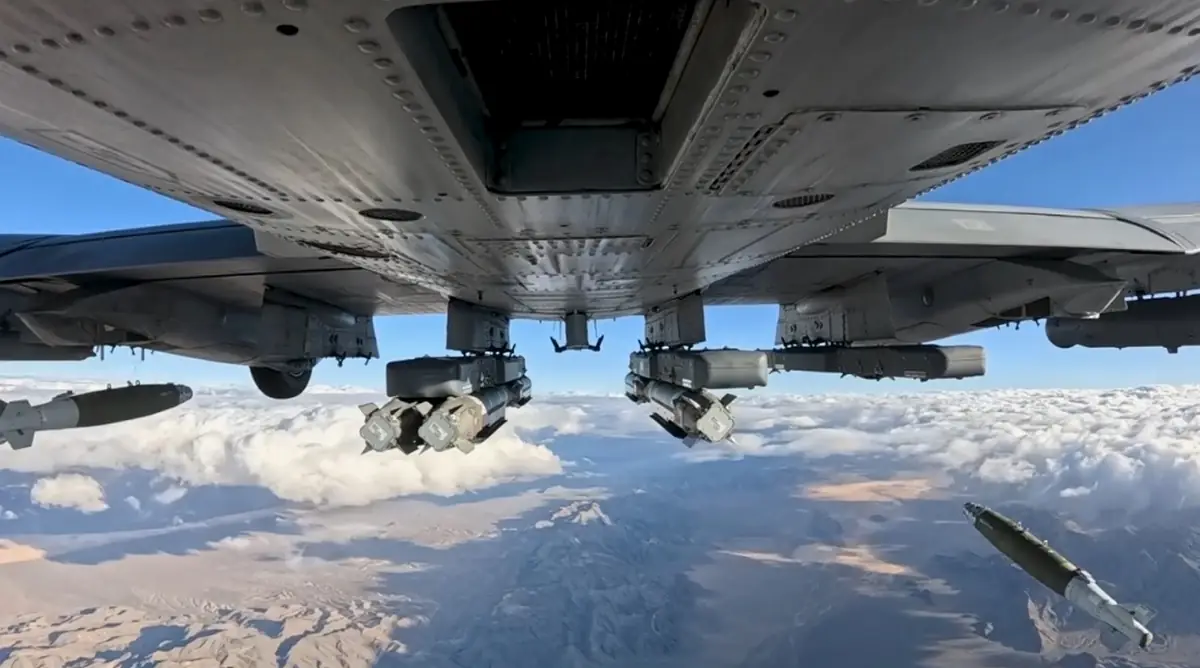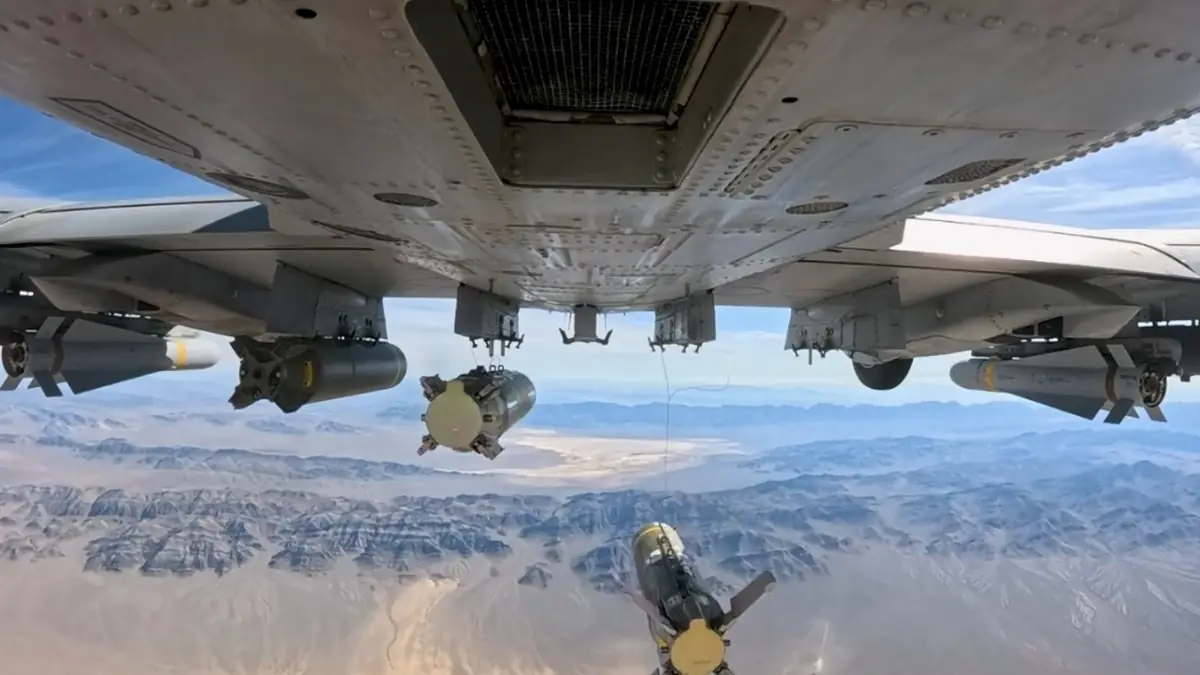The U.S. Air Force has released a series of videos showcasing routine yet impressive tests of various munitions on the A-10C Thunderbolt II at Nellis Air Force Base, Nevada. The footage, which captures tests conducted from March 27 to June 11, 2024, was recorded using the new OTTER-CAM (Operational Test & Training Exterior Recording Camera).

Most importantly, the recordings were made using an onboard camera developed in-house and mounted on the underside of the A-10. The new setup, assembled by a flight test engineer for $700, replaces similar devices from leading defense companies that cost nearly $1 million.

The statement notes that the A-10 unit of the 422nd Test and Evaluation Squadron conducted an assessment of the new A-10’s capabilities under the Operational Flight Program 12. The evaluation involved testing all types of armaments available on the A-10C to verify the functionality of the software before the aircraft is delivered to operational squadrons.
OTTER Cam
The OTTER camera is an innovative system developed in-house by First Lieutenant Jacob Gale, a flight test engineer with the 59th Test and Evaluation Squadron. His work was inspired by the need to create a cost-effective, quickly manufactured onboard camera for use on the A-10C, as existing cameras cost nearly a million dollars and require a year for manufacturing and flight certification.
“We can’t integrate new and complex stores on the A-10 without wing or fuselage-mounted cameras, and we don’t have the budget to pay third-party organizations for this capability,” Gale said. “With the support of my leadership and the A-10 Systems Program Office, we were able to create a solution that saves the Air Force significant time and money.”
The OTTER Cam, developed by Geil and costing only $700, was designed, manufactured, and assembled in-house. It consists of an action camera, a robust commercial housing, and a custom mounting bracket. The camera can record any of the eleven weapon pylons on the A-10C in flight, which is a crucial feature for ensuring safe separation during the testing of new stores.

Five videos showcase various ways the A-10C employs its diverse armaments. The OTTER Cam, mounted under the engines, provides a clear view of all pylons used for air-to-ground weaponry. Notably, all the armaments featured in the videos are real, except for the 30mm training rounds.
In the first video, the A-10 uses four cluster bombs, 2.75-inch Hydra rockets, two AGM-65 Mavericks, and the 30mm GAU-8 cannon. Specifically, the cluster bombs appear to be a mix of CBU-87 Combined Effects Munitions (CEM) and CBU-103 Wind-Corrected Munitions Dispenser (WCMD), while the Mavericks may be the heavy penetrating AGM-65G Imaging Infrared (IIR) versions with a thermal imaging capability, which do not require a launch.

The video also shows the A-10 executing high-angle attacks with Hydra rockets, as indicated by the thin trails of smoke emanating from the wing, and the legendary GAU-8 “Avenger” Gatling gun. The high angle of the attacks also allows viewers to see the smoke rising from the targets after they are hit.
The second video shows the A-10 carrying three BRU-61 racks with 12 Small Diameter Bombs (GBU-39, SDB), in addition to three GBU-38 Joint Direct Attack Munitions (JDAM). Notably, all the weapons are released in groups, with the SDBs being released in waves of six munitions during two passes, and the three JDAMs being released in a single pass.
The third and fourth videos showcase a more varied loadout: one AGM-65, three GBU-38, four GBU-39, and three GBU-12 Paveway II laser-guided bombs, carried on a triple ejector rack instead of the usual single bomb per pylon. In both cases, which display the same payload but with mirrored configurations, not all of the weapons are used.
Both videos showcase a mix of single and salvo munitions releases during attacks at both low and high angles, with numerous low-altitude passes. Once again, the footage includes multiple launches at both low and high angles. One particularly interesting sequence shows the A-10 performing a low-angle shot at the first target and then quickly maneuvering the rudder and ailerons to hit a second target, all within the same pass.

The fifth and final video, which is also the shortest, shows the A-10 loaded with a single ADM-160B Miniature Air-Launched Decoy (MALD), released later. The MALD is a low-cost, expendable, programmable air-launched munition that can simulate flight profiles and characteristics of aircraft and weaponry, distracting and misleading the enemy’s integrated air defense systems.
Originally developed in 1995, the MALD is designed to stimulate and confuse enemy air defenses during suppression missions. A key component is the Signature Augmentation Subsystem (SAS), which uses radar amplifiers to simulate various aircraft while flying along a pre-programmed route. The newer ADM-160C variant can also jam enemy radar systems.
Over the past few years, the A-10 has received the MALD system to adapt to future combat and enhance the ability of pilots to safely navigate hostile environments. During Exercise 2022, A-10s equipped with MALD camouflage devices were used to support B-1B Lancer bombers deployed to Guam.
Source: Theaviationist








